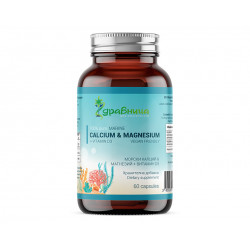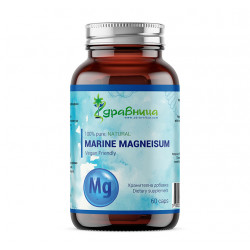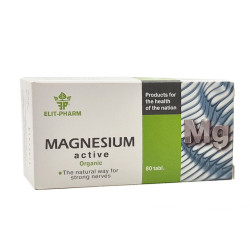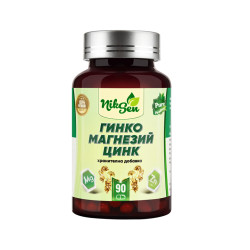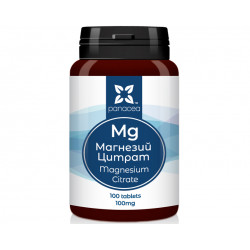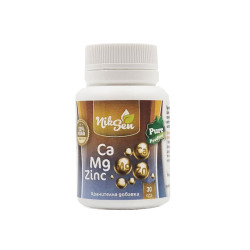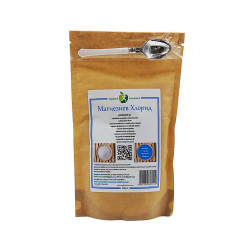Magnesium is an essential mineral involved in over 300 enzymatic reactions - including energy production (ATP), protein and DNA synthesis, nerve signal transmission, muscle contraction, blood sugar regulation, blood pressure control, and bone health. The body maintains a precise balance through absorption in the intestines and reabsorption in the kidneys.
Daily Requirements (Guidelines)
European Union (EFSA): Adequate Intake (AI) for adults - ~350 mg/day for men and 300 mg/day for women from total intake (food + water). For magnesium from supplements, EFSA sets an Upper Level (UL) of 250 mg/day for adults.
United States (NIH/ODS): Recommended Dietary Allowance (RDA) - 400-420 mg/day (men), 310-320 mg/day (women). UL: 350 mg/day only for magnesium from supplements/medications (does not apply to food sources).
Key takeaway: Aim to meet your needs mainly through diet. When supplementing, follow the UL according to local regulations (EU: 250 mg elemental Mg/day unless otherwise directed by a healthcare professional).
Natural Sources of Magnesium
Top dietary sources include:
- Nuts and seeds (almonds, cashews, pumpkin seeds)
- Leafy greens (spinach)
- Whole grains
- Legumes (beans, lentils)
- Fatty fish
- Mineral waters naturally high in magnesium
Magnesium Deficiency - Signs and Risk Groups
Possible symptoms: muscle cramps/twitching, fatigue, irritability, sleep disturbances, arrhythmias; in severe cases - hypocalcemia or hypokalemia.
At-risk groups: people with gastrointestinal disorders/malabsorption, diabetes, chronic alcohol use, the elderly, and those taking diuretics or proton pump inhibitors (PPIs). Long-term PPI use has been linked to low magnesium levels (FDA warning).
Serum magnesium levels do not always reflect total body stores - evaluation should consider symptoms and, if needed, further tests as determined by a physician.
What the Research Says: Dosage Ranges for Specific Health Concerns
(elemental Mg/day - for reference only; not individual medical advice)
Migraine prevention
Considered “possibly effective” in guidelines; magnesium oxide or better-absorbed forms are used.
Research doses: 400-600 mg/day (often Mg oxide; 2-3 months).
Tip: Switch to citrate or glycinate if gastrointestinal discomfort occurs.
Constipation (as a laxative)
Magnesium citrate or hydroxide draws water into the intestines.
Research doses: single doses per OTC label instructions.
Tip: Follow label guidance; avoid long-term use without medical supervision.
Sleep / Insomnia
Mixed results; small trials in older adults show some benefit.
Research doses: ~500 mg/day (often Mg oxide).
Tip: Exceeds EU UL - use only under supervision; keep expectations realistic.
Anxiety / Stress
Evidence is mixed but encouraging; more high-quality trials are needed.
Research doses: 75-400 mg/day in various forms.
Tip: Benefits seem greatest in those with deficiency.
Blood pressure
Meta-analyses show modest reductions, especially in hypertensives or those with low Mg.
Research doses: 240-480 mg/day.
Tip: Complements but does not replace antihypertensive medication.
Insulin sensitivity / Glycemic control
Moderate improvement in some groups; results are inconsistent.
Research doses: 250-400 mg/day for at least 4 months.
Tip: Most meaningful in those with low baseline magnesium; not a substitute for standard therapy.
Magnesium Forms - Absorption and Key Features
Magnesium citrate
Excellent balance of absorption and tolerance; superior to oxide in trials; mild laxative effect possible.
Magnesium lactate / chloride / aspartate
Good bioavailability compared to oxide.
Magnesium oxide
Inexpensive, but low absorption; more likely to cause GI discomfort. Useful if laxative effect is desired.
Magnesium bisglycinate (glycinate)
Chelated form; often well tolerated (less diarrhea). Limited evidence it absorbs better than citrate.
Magnesium malate / taurate
Popular choices; clinical data is limited; selection often based on tolerance or targeted benefits (e.g., taurate for cardiovascular support - evidence is still limited).
Magnesium L-threonate
Marketed for brain health; early, mixed, and often industry-funded studies; no consensus it outperforms other forms for most people.
Magnesium sulfate (Epsom salt)
Internal use: laxative/medical purposes; external use (baths): relaxation - systemic absorption through skin is minimal and unpredictable.
Magnesium from mineral water
Well absorbed; convenient natural source depending on the water composition.
Absorption summary: Organic salts (citrate, lactate, aspartate, chloride) generally absorb better than oxide.
Smart Supplementation Tips
- With food - reduces GI discomfort and diarrhea risk (especially citrate/oxide).
- Split doses - morning/evening if taking >150-200 mg elemental Mg/day.
- Separate from certain medications - Mg can reduce absorption of tetracyclines/fluoroquinolones, bisphosphonates, levothyroxine - take them 2-4 hours apart.
- PPIs - long-term use may cause low Mg; discuss monitoring or alternatives with your doctor.
- Kidney disease/elderly - avoid high doses; risk of hypermagnesemia.
Safety and Side Effects
Common: diarrhea, nausea, abdominal cramps - more likely with oxide/citrate at high doses.
Serious toxicity (weakness, low blood pressure, arrhythmias) occurs mainly with kidney impairment or excessive intake from medications/laxatives. Always stay within the UL and consult a healthcare professional if you have chronic conditions or take multiple medications.
Which Form for Which Need? (Quick Guide)
- General prevention / deficiency: citrate or glycinate; start with 100-200 mg elemental Mg/day; monitor effect; don’t exceed local UL without a medical reason.
- Constipation: citrate/hydroxide per laxative label; avoid long-term use.
- Migraine: aim for 400-500 mg/day of a well-absorbed form (citrate/glycinate); consult a neurologist.
- Sleep / anxiety: evening glycinate or citrate at a low-to-moderate dose; keep expectations realistic.
- Cognitive claims: L-threonate - interesting but early-stage evidence; not the “gold standard.”
Magnesium is vital for metabolism, neuromuscular function, and cardiovascular health. Form matters: citrate, lactate, and chloride tend to absorb better than oxide. For most people, a simple strategy works best - focus on food first, then add a moderate dose of a well-tolerated supplement, staying within your region’s UL and mindful of interactions. For specific issues (migraine, constipation, sleep), use evidence-based doses and never replace medical care.




